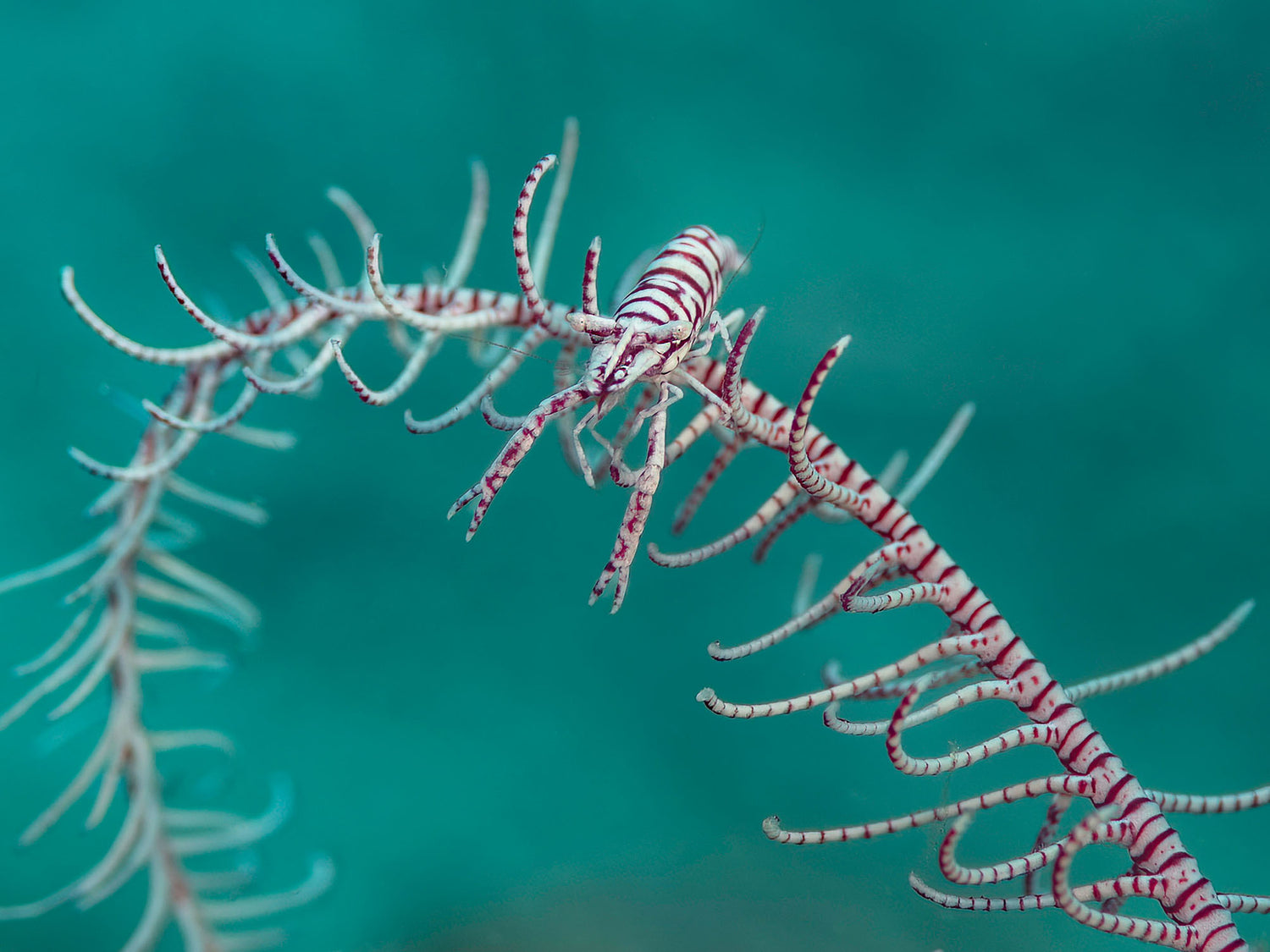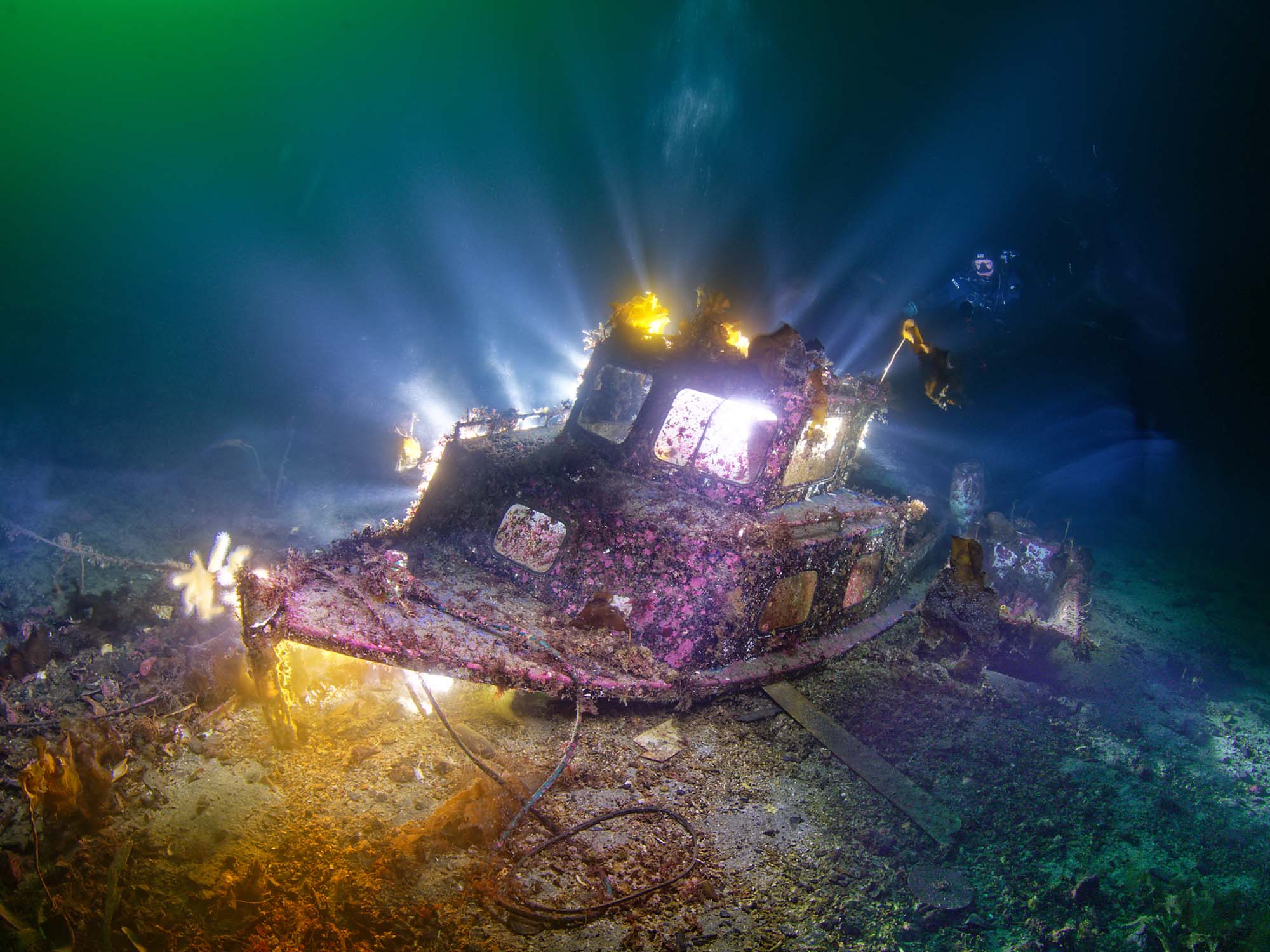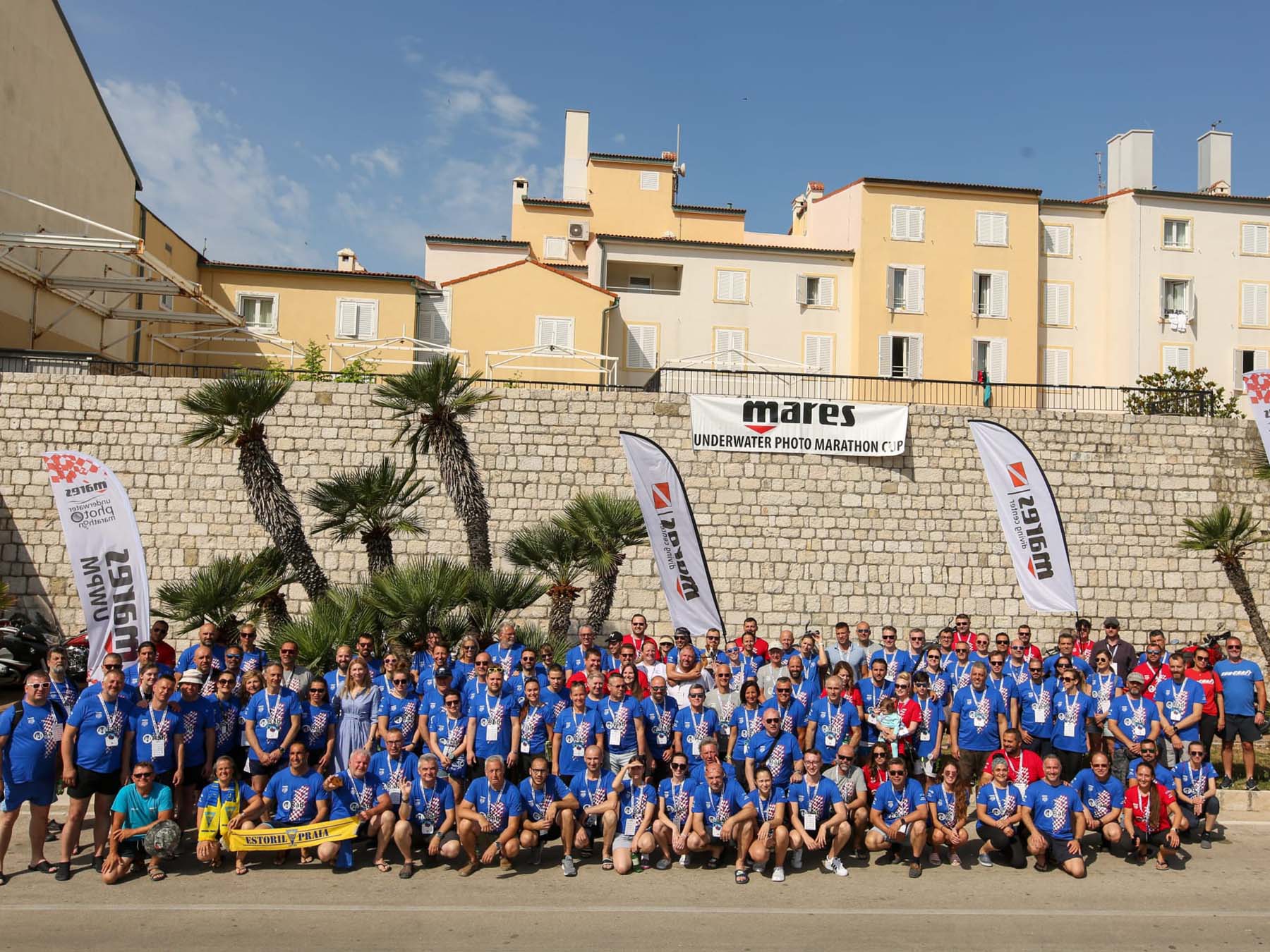By Glenn Ostle
There are a number of specialties within the world of underwater photography, but few as fascinating and challenging as macro or extreme close-up photography (often referred to as “muck diving” when done in silty or sandy environments).
My partner Pam and I have been diving together for many years and in the past have visited a number of places well known for macro and muck diving. But one place we’ve always wanted to visit was Anilao in the Batangas region of the Philippines.
Considered to be one of the birthplaces of muck diving, Anilao provides underwater photographers the opportunity to scour sandy and silty areas in search of colorful and often rare nudibranchs, brightly colored shrimps, weird looking frogfish, several varieties of octopuses as well as other strange “critters” that are found nowhere else.

Diving in Anilao is done from bangkas, single-hulled boats with double outriggers, widely used throughout the Philippines. © Pam Ostle using an iPhone 13Pro.
To get the most from our visit, we elected to join a week-long workshop sponsored by Bluewater Travel and hosted by Erik Lukas and Dan Bishop.
Billed as a “Seven Day Macro Boot Camp,” the event took place at Anilao’s famous Crystal Blue Resort where Mike Bartick, a well-known name in the field of macro and muck diving photography and one of the pioneers of blackwater diving, is resident photo pro.
Crystal Blue is a beautiful and impressive resort built on a hillside. It hosts about twelve workshops each year, as well as several weeks dedicated to blackwater diving.
“Get Low….Get Close…Shoot Up.”
The camera room is large, comfortable, and well equipped. Every photographer has a private, dedicated area outfitted with surge protectors and lots of space to assemble and store camera gear. On one wall is a large sign describing in few words, the proven technique for successful macro photography, namely “Get Low….Get Close…Shoot Up.” It was a message that was impressed upon us throughout the week.
From the beginning, the workshop was informative and intense. Each day began with a one-hour classroom lecture by Mike and/or Erik, after which we headed out for two dives aboard bangkas, single-hulled boats with double outriggers that are widely used throughout the Philippines.
After lunch, we made two more dives. On a few days, participants had the option to swap the afternoon dives for two late night blackwater dives, for which the area is well known.
Returning to the resort in the evening, it was time to review our photos and load several onto a flash drive. They would become the subjects for critique the following morning.
The workshop was designed to pass on as much knowledge as possible regarding specific macro techniques and encourage guests to use that knowledge to create their own images.
The week was roughly divided into daily assignments beginning with a review of the three main elements of exposure, namely aperture, shutter speed, and ISO. Examples were used to show how, by understanding the interrelationship of these three variables, a photographer can control the final appearance of his or her photo.
Throughout the week we were prompted to get close and shoot up, in order to make the subject appear larger and on the same plane as the viewer. This also allows enough light from the strobes to bring out the color and detail in the image.
Our group learned how to create a black background in their photos by using a fast shutter speed, small aperture, a low ISO, and making sure there is nothing directly behind the subject. Or if a blue background was desired, by shooting upwards and using a slow shutter speed and a wider aperture. This led to a discussion about how best to achieve a pleasing “bokeh,” a Japanese word that in photography means blurring the background in order to make the subject stand out.

This photo demonstrates use of a wide aperture which created a narrow depth of field and a soft pastel foreground and background. This technique requires focusing on a single point, in this case the eye of the larger Red-barred Sandperch. 1/180 • f/6.7 • 100 ISO • Nikon Z6 mirrorless camera, AF-S MICRO NIKKOR 105mm lens, Ikelite DL200 housing and single Ikelite DS160 strobe. © Glenn Ostle
One day we were to try shooting with apertures from f/6.7 and wider, a tricky technique which narrows the depth of field but produces a look with soft colors in the out-of-focus areas.
Another day our assignment was to look closely for subjects with eggs or those engaged in unique behaviors such as cleaning, mating, feeding, or hunting, and try to capture a photo at the “peak of the action.”
The workshop included many discussions about creative lighting including positioning, colorizing, and backlighting, and participants were encouraged to try using a “snoot,” a separate light source that creates an adjustable pool of light to highlight the subject or isolate it from the background. Crystal Blue had a number of snoots available that participants could try.
By the end of the week, Pam and I had improved our knowledge of macro photography and had picked up some new techniques along the way. But my main takeaway was simply to remember in the future, to take more time to think before I shoot in order to decide what settings, lighting and composition will best achieve my desired result.
Photo Gallery | Anilao & Dumaguete, Philippines
The following are a few photos we took during the week, that illustrate some of the techniques we learned at the workshop. Note: Several photos were actually taken in Dumaguete, just before we arrived in Anilao, and are included here only to further illustrate techniques taught during the Anilao workshop.
- All images taken with a Nikon Z6 mirrorless camera inside an Ikelite Underwater Housing with Ikelite DS160 Strobe.

Getting low and shooting upwards toward this small nudibranch, highlighted its silvery rhinophores and gills. Light from the strobes striking backscatter and sand, created an interesting bubble pattern which we chose to leave in the photo. 1/180 • f/32 • 100 ISO // AF-S MICRO NIKKOR 105mm lens. © Glenn Ostle

Candy crabs can be found on soft spiky coral where they camouflage themselves by mimicking the colors of the polyps. A black background makes the spiky corals stand out to add depth and texture to the photo. 1/180 • f/19 • 200 ISO // AF-S MICRO NIKKOR 105mm lens, +5 diopter. © Glenn Ostle

While not the most interesting subject, this picture of a flatworm demonstrates a technique we were taught at the workshop. Opening the aperture wide, f/6.7 in this case, creates a very narrow depth of field which, with a single point of focus, causes areas in front of and behind the subject to blur. 1/180 • f/6.7 • 100 ISO // AF-S MICRO NIKKOR 105mm lens, +5 diopter. © Glenn Ostle

It is always nice to get more than one subject in a frame. We found this pair of Ornate Ghost Pipefish in Dumaguete just before our Anilao workshop. The black background helps highlight the fact that one pipefish is carrying eggs. 1/125 • f/16 • 800 ISO // AF-S MICRO NIKKOR 105mm lens. © Glenn Ostle

Getting close and shooting up put the focus on this nudibranch’s two large rhinophores and created a colorful bokeh in the background. 1/180 • f/10 • 100 ISO // AF-S MICRO NIKKOR 105mm lens, +5 diopter. © Glenn Ostle

There are a number of discarded bottles in the waters around Anilao where small fish, such as these Yellow Pygmy Gobies, have taken up residence. The mouth of the bottle acts as a natural frame around the fish peeking out. Sometimes photographers will use an external light to illuminate the inside of the bottle to brighten the background. 1/180 • f/16 • 100 ISO // AF-S MICRO NIKKOR 105mm lens. © Glenn Ostle

A small aperture of f/22 provides great depth of field for maximum sharpness in this picture of a small goby on a sea pen, taken in Dumaguete just before we went to Anilao. A higher ISO was needed to compensate for the loss of light. 1/125 • f/22 • 400 ISO // AF-S MICRO NIKKOR 105mm lens. © Glenn Ostle

Eggs always make an image more interesting. In this picture the background is sufficiently blurred. But in hindsight, a wider aperture would probably have achieved a more pleasing bokeh. 1/190 • f/16 • 100 ISO // AF-S MICRO NIKKOR 105mm lens. © Glenn Ostle

To make this porcelain crab stand out, a light was held just behind the anemone on which it was sitting. This created an orange glow under the crab. (Photo taken in Dumaguete). 1/125 • f/38 • 200 ISO // AF-S MICRO NIKKOR 105mm lens. © Glenn Ostle

The orange coral where we found this squat lobster, made the lobster look like it was inside a cavern. The curves and colors help frame the lobster, create a natural bokeh and add depth and texture to the image. 1/180 • f/19 • 100 ISO // AF-S MICRO NIKKOR 105mm lens. © Glenn Ostle

This tiny nudibranch reminded us of a small birthday cake, with candles. By photographing it from the front using a small aperture, it was possible to highlight the rhinophores and still see the gills on its back. 1/125 • f/22 • 100 ISO // AF-S MICRO NIKKOR 105mm lens, +5 diopter. © Glenn Ostle

A small aperture and having nothing directly behind this Xena crab on a whip coral, helped create a black background. Another option would have been to add a colored light behind the crab, that would have added a bright “sun-like”element in the dark background. 1/180 • f/22 • 100 ISO // AF-S MICRO NIKKOR. © Glenn Ostle
 Glenn Ostle is an Ikelite Ambassador living in Charlotte, North Carolina, USA. He and his partner, Pam Hadfield, travel the world to dive and photograph. His articles have appeared in a number of publications, and his photos have been recognized internationally and have appeared on the covers of a number of magazines. See more of his work at featherandfins.smugmug.com. Read more...
Glenn Ostle is an Ikelite Ambassador living in Charlotte, North Carolina, USA. He and his partner, Pam Hadfield, travel the world to dive and photograph. His articles have appeared in a number of publications, and his photos have been recognized internationally and have appeared on the covers of a number of magazines. See more of his work at featherandfins.smugmug.com. Read more...
Additional Reading
Sharp Shooting: Developing Underwater Photography Skills on Safari
Gray Whales, Blue Water | Photographing Humpback Whales in Moorea
Maintaining Your Macro Eye | Using Underwater Techniques on Land
DSLR To Mirrorless | How Making the Switch Improved My Photography
Cousteau's Aquarium | Sea of Cortez with the Nikon Z6
The Aquarium of the World: Diving Mexico's California Baja Sur













